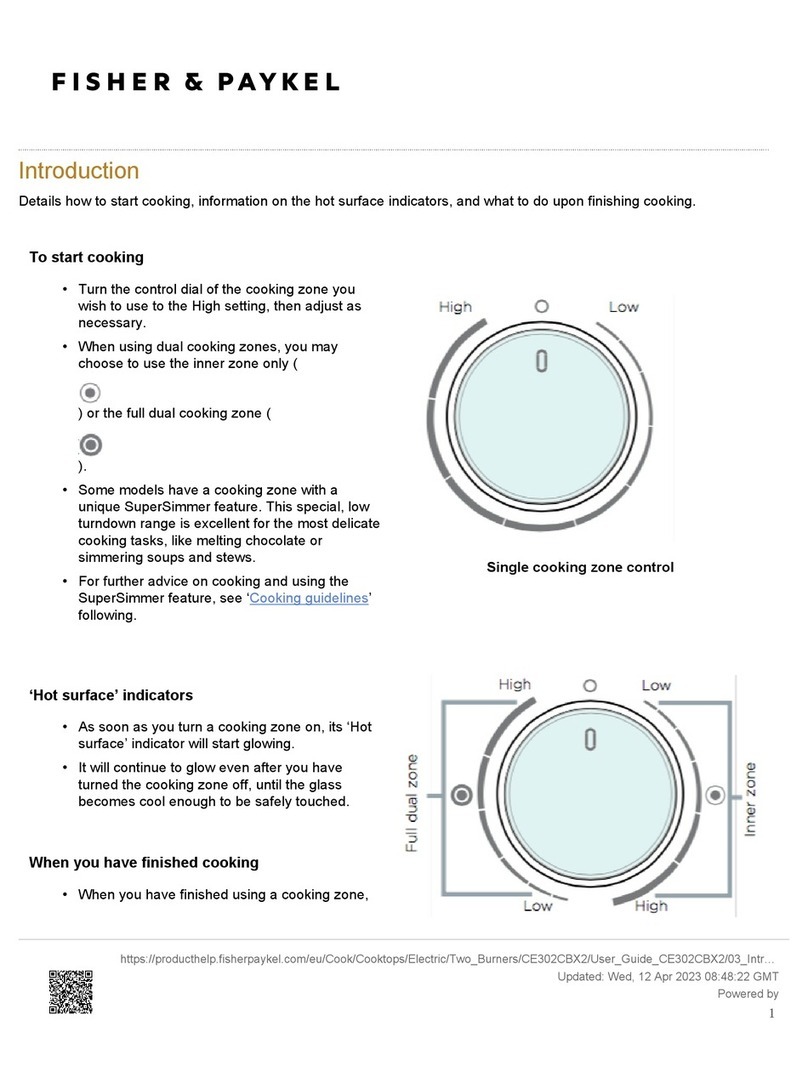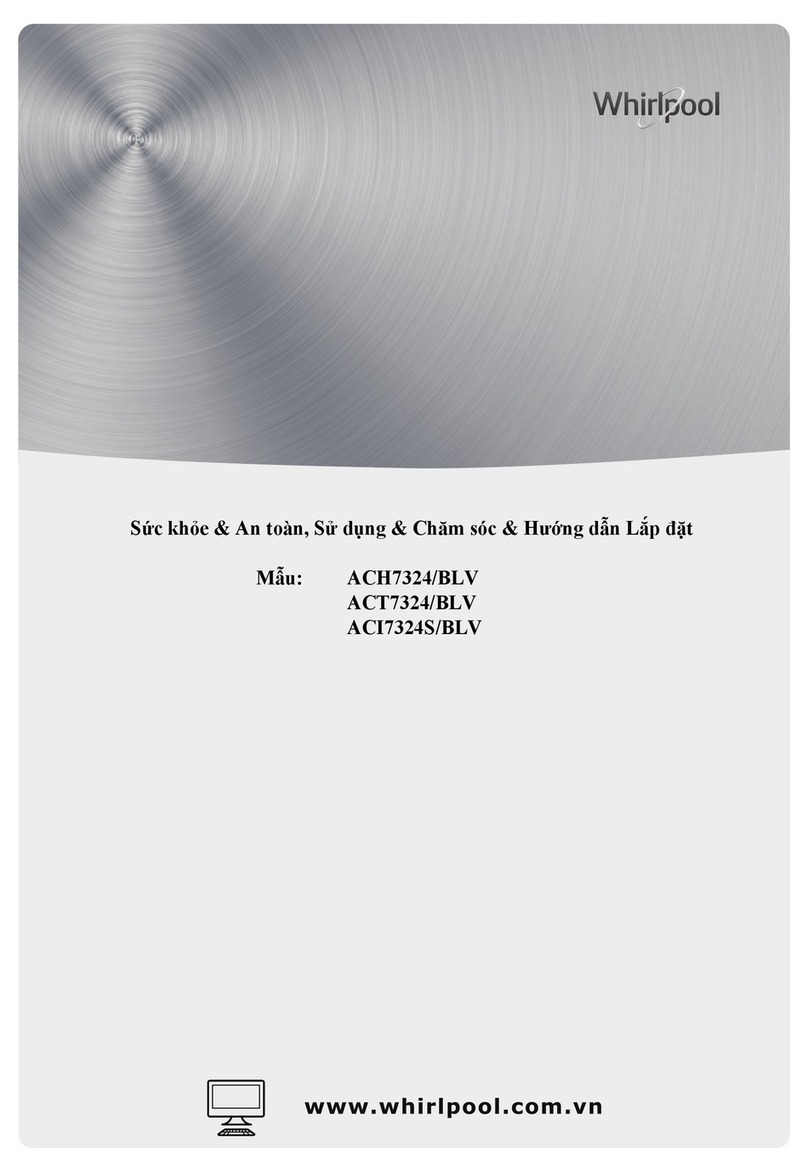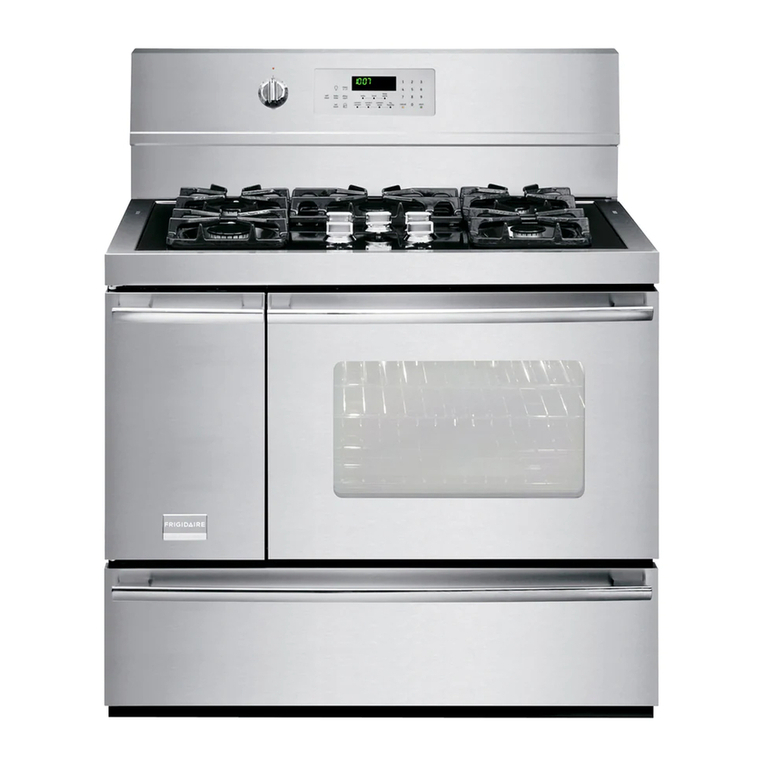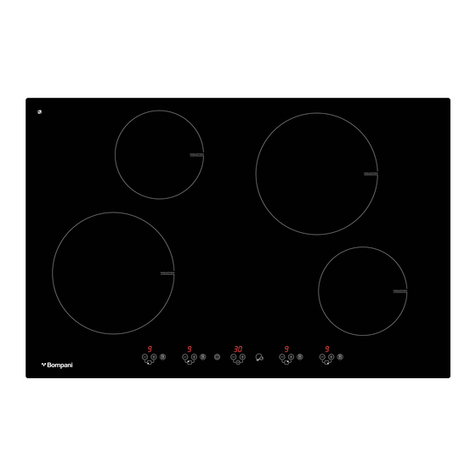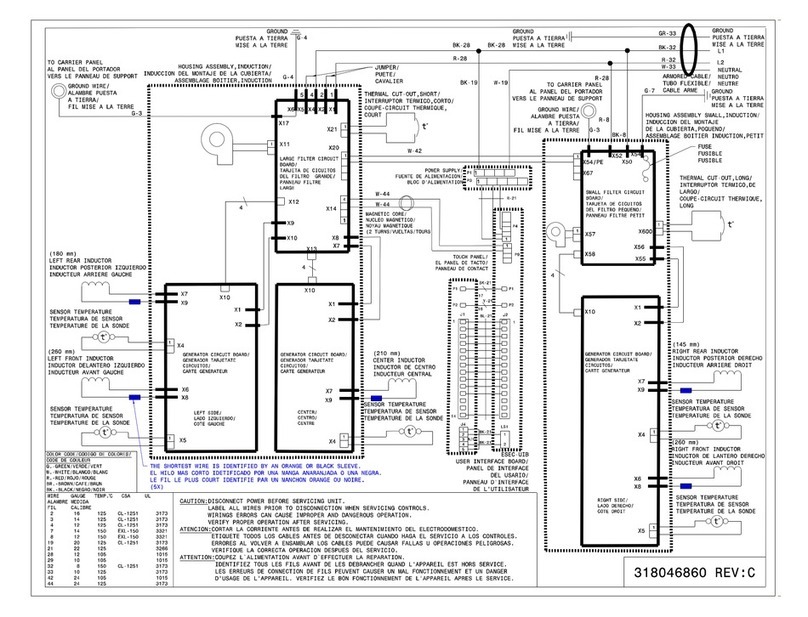
9
TEMPERATURE CALIBRATI N PR CEDURE (SINGLE PINT CALIBRATI N, ADVANCED SERIES)
This method can be used for calibrating the top plate surface of the Advanced Series
unit.
To set a Single Point Calibration (SPC) adjustment:
a. Turn the heat knob clockwise until the display reaches the desired heat
setting, and let the unit stabilize to the user input temperature. The
heater temperature has stabilized when the temperature display is no
longer blinking and the unit will beep five times.
b. Wait ten minutes for the surface temperature to stabilize. Measure the
top plate with a traceable surface temperature measuring device.
c. Press and hold the Last Temperature button. The display will start to
scroll through the available SPC options (“UP”, “dn”, “SEt” and “dEL”) as
long as the Last Temperature button is held down. Once you select “UP”
or “dn” mode and release the Last Temperature button the unit will beep
two times and the display will begin to blink quickly. This lets you know
you are programming in SPC mode.
N TE: There is a thirty second time out (Last Temperature button must be
pressed at least once in thirty seconds, or unit will exit SPC mode). Do not
touch the heat knob while in SPC mode. If the heat knob is adjusted dur-
ing this procedure you will exit SPC mode.
d. Once the desired option is displayed, release the Last Temperature button.
Please see the explanation below for each option.
e. Selecting the “SEt” option saves the Single Point Calibration adjustment
for that temperature set point and allows you to exit this SPC mode (see
Section c). When the “SEt” option is selected “SEt” will be displayed. To
save the current SPC point and exit the SPC programming mode, release
the Last Temperature button when “SEt” is on the display. The display will
now show your set point temperature with a decimal point for that set-
ting.
f. Select the “UP” option if your externally measured temperature of the top
plate is higher than the set point on the display. When the “UP” option
is selected the current SPC adjusted temperature is displayed and blink-
ing quickly. To increase the SPC, press and release the Last
Temperature button multiple times (do not touch heat knob) until the
display reads the value you recorded as the measured temperature of the
top plate. Changes are not saved until the “SEt” option is selected (and
the Last Temperature button is pressed and released), if the temperature
is adjusted too high, delete the SPC adjustment and repeat procedure.
g. Select the “dn” option if your externally measured temperature of the top
plate is lower than the set point on the display. When the “dn” option
is selected the current SPC adjusted temperature will be displayed and
blinking quickly. To decrease the SPC, press and release the Last
Temperature button multiple times (do not touch the heat knob) until
the display reads the value you recorded as the measured temperature of
the top plate. Changes are not saved until the “SEt” option is selected
(and the Last Temperature button is pressed and released), if the temper-
ature is adjusted too low, delete the SPC adjustment and repeat procedure.
h. Selecting the “dEL” option will delete all Single Point Calibration points
and allow you to exit this SPC mode (see Section c). When the “dEL”
option is selected “dEL” will be displayed. To delete all SPC points and
exit the SPC mode release the Last Temperature button when “dEL” is on
the display.
i. For set point temperatures with a SPC adjustment, there will be a decimal
point in the display. Once the SPC adjustment is set, the display will blink
while the unit’s temperature is settling. When the SPC set point is
reached, the display will stop blinking and the unit will beep five times.
j. This process may be repeated for up to three separate set points. If a
fourth SPC set point is entered, the first set point will be overwritten. To
readjust an existing SPC set point, you must delete the current settings
(all SPC points will be deleted, and the decimal points will no longer be
displayed at those temperatures) and repeat the SPC procedure. If SPC
adjustments are not deleted prior to resetting SPC for a set point then
the temperature adjustment will not be accurate
k. The SPC adjustments are limited to the maximum and minimum tempera-
tures and limits allowed by the particular unit.
